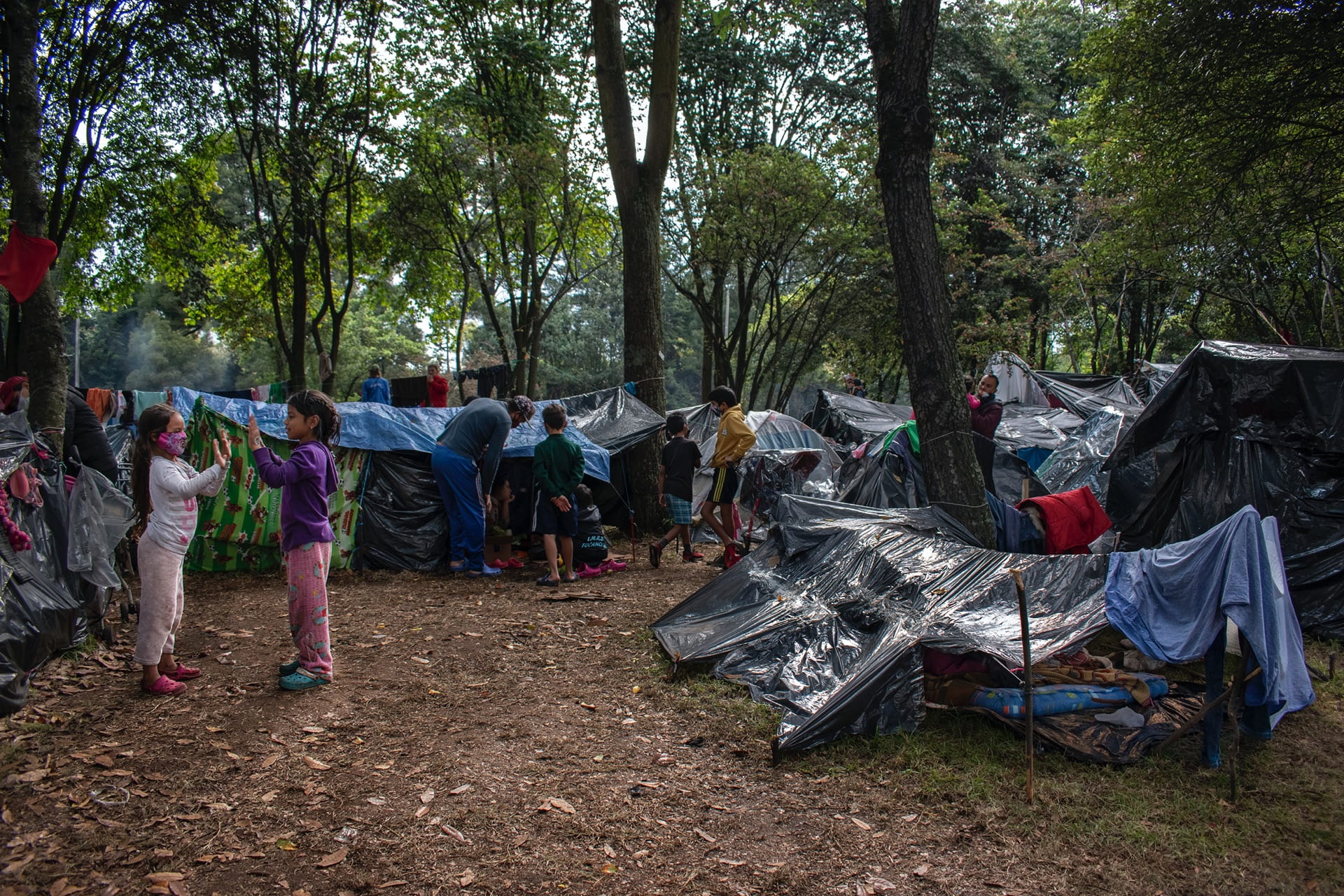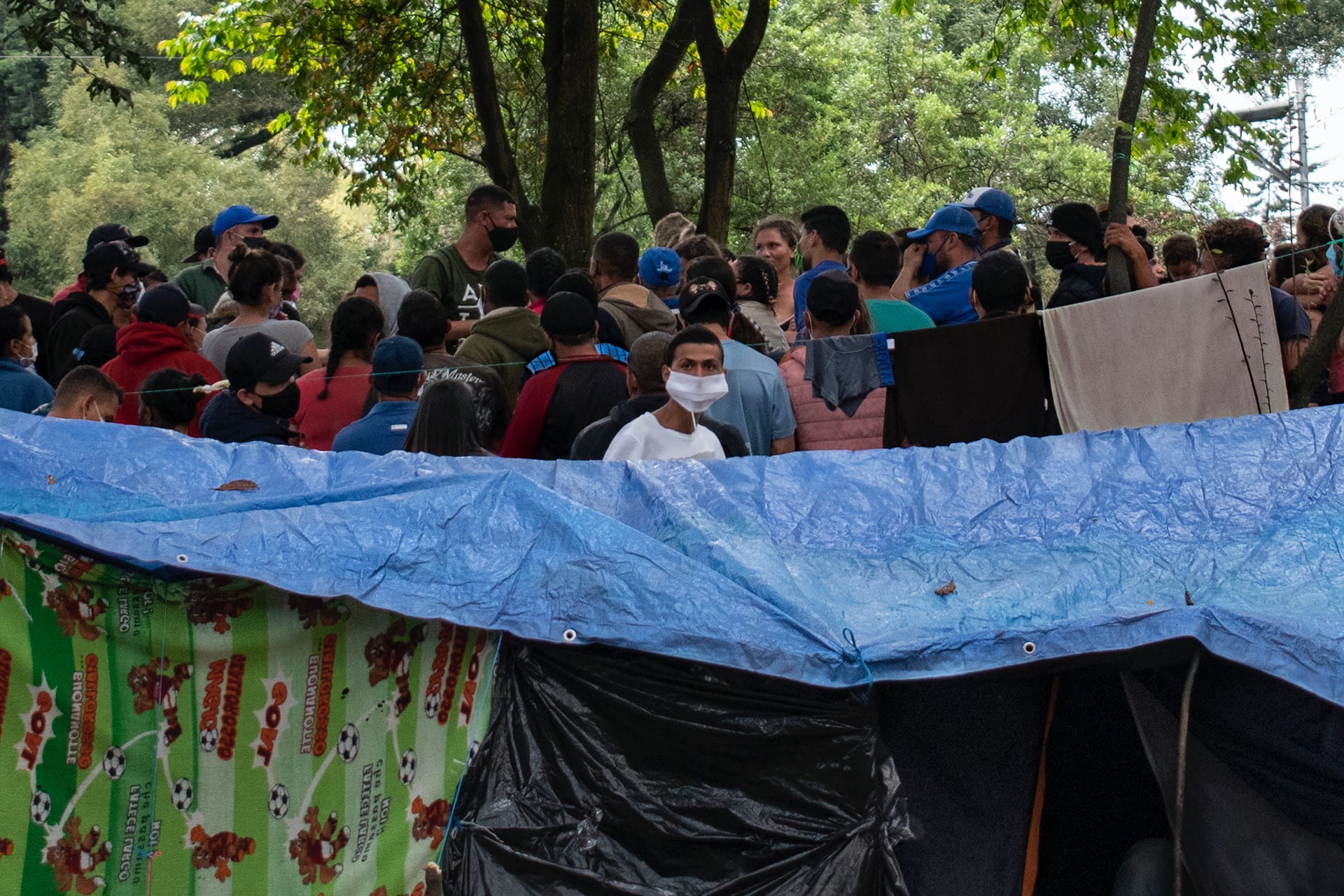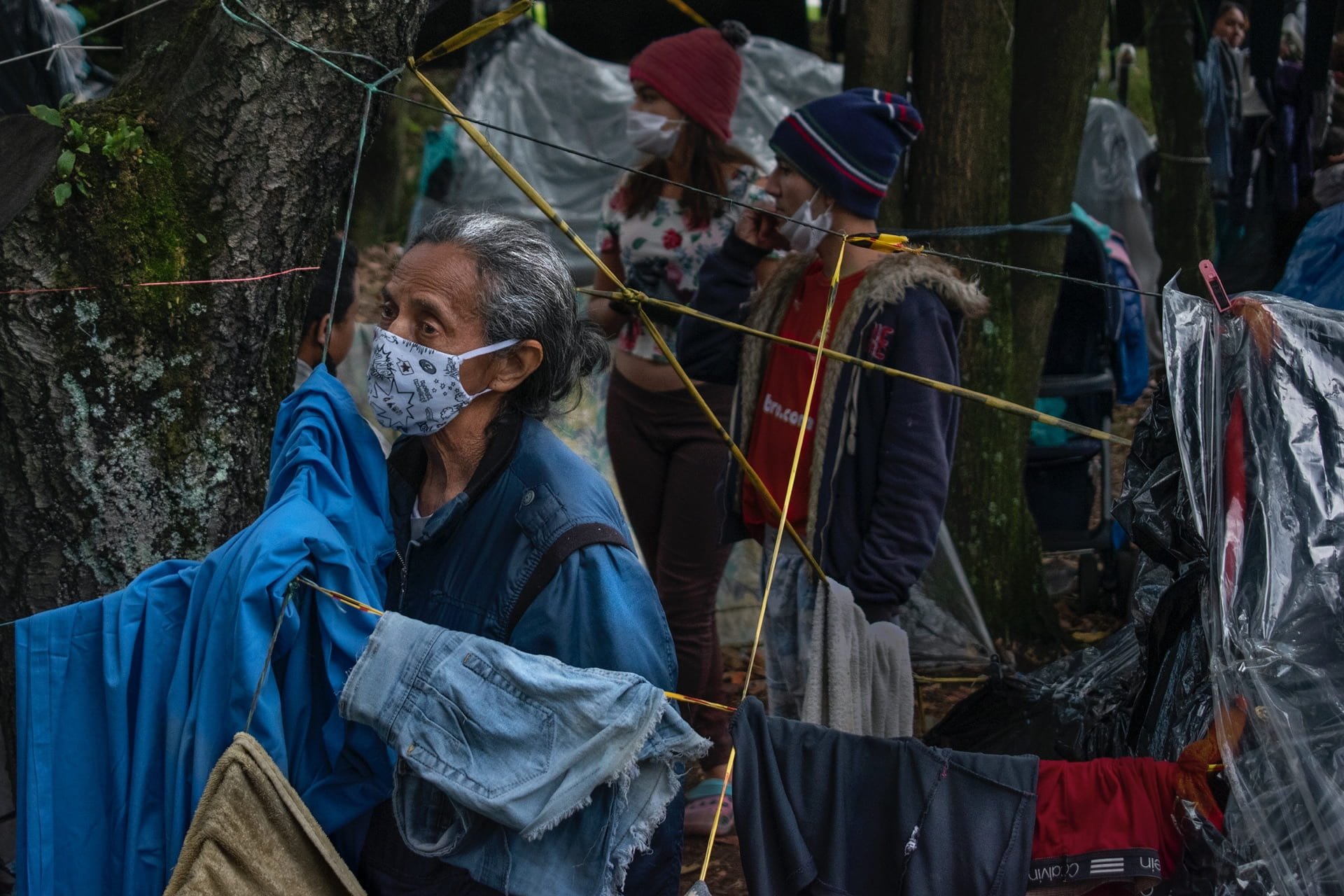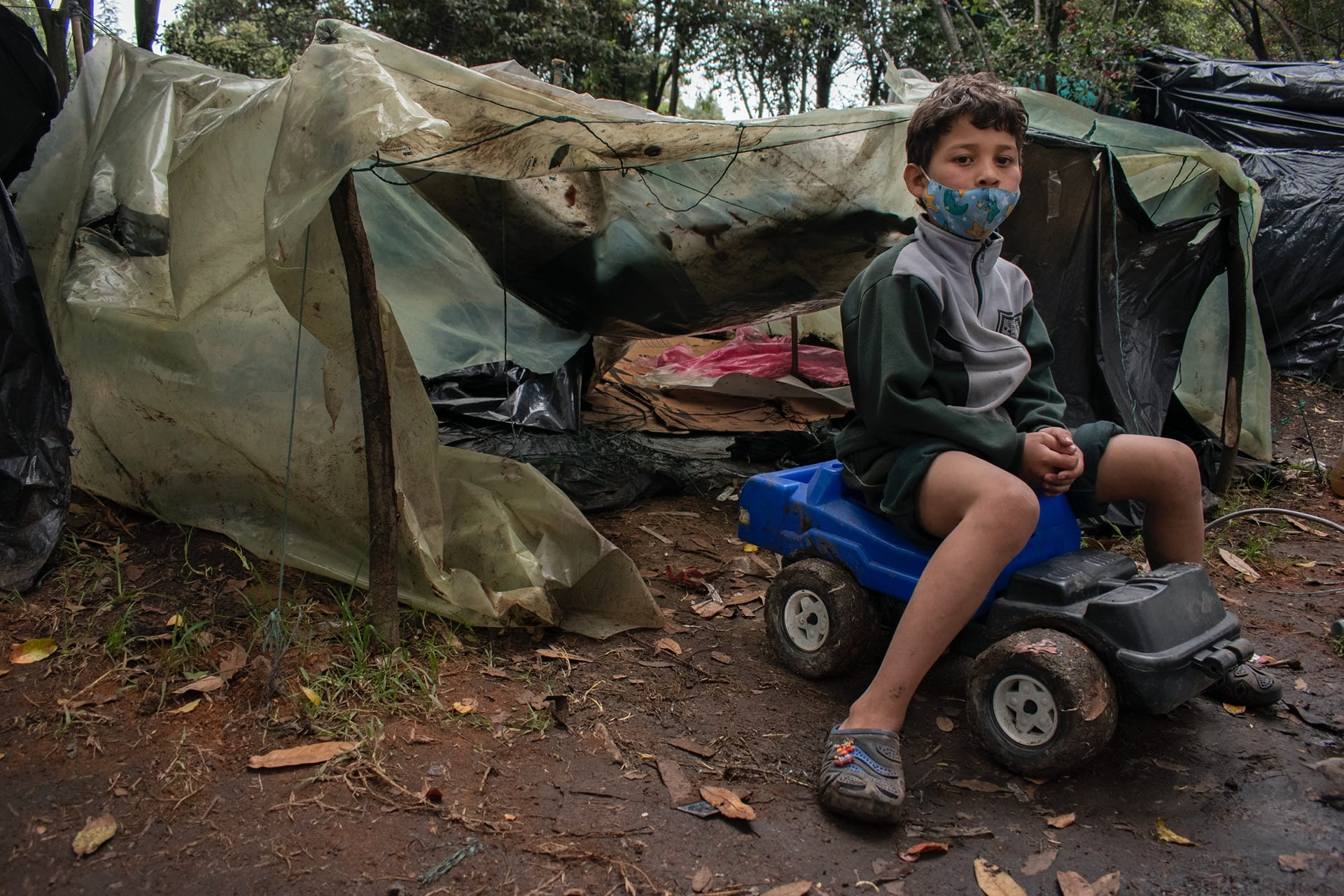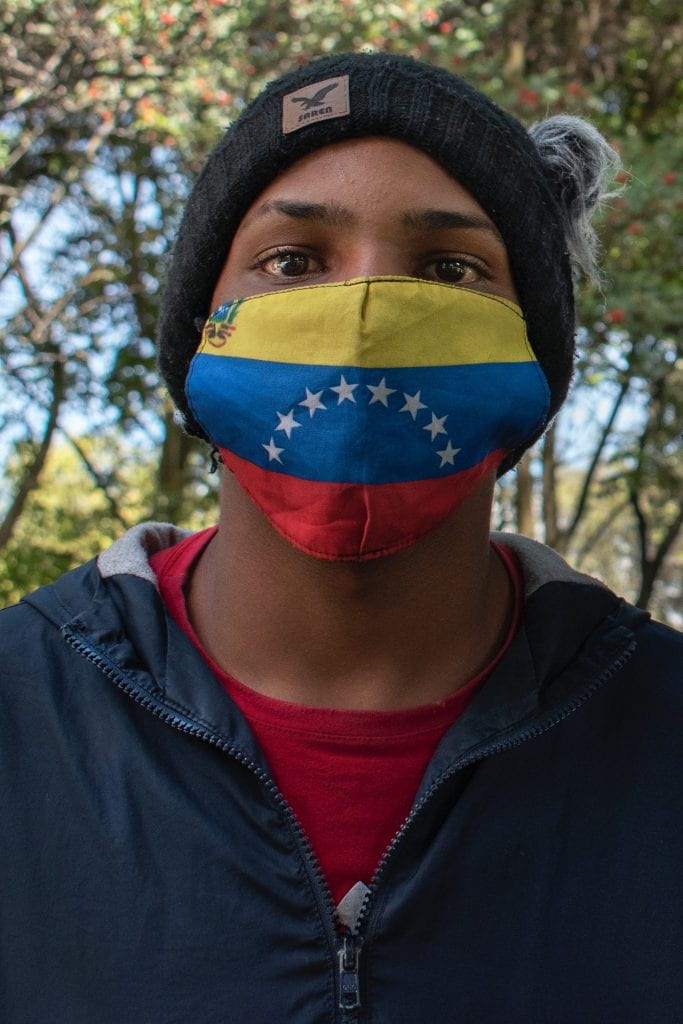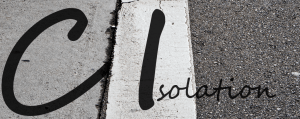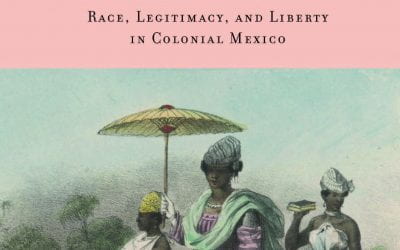Image, Pandemic, Return: the Drama of Venezuelan Migrants
Reflecting on the Work of Cindy Catoni
Photos by Cindy Catoni
Cindy Catoni is featured in the digital exhibition, “Documenting the Impact of Covid-19 through Photography: Collective Isolation in Latin America,” sponsored by ReVista and the Art, Culture, and Film program at Harvard’s David Rockefeller Center for Latin American Studies (DRCLAS.)
The resulting exhibition, based on an Open Call for Photography launched in July 2020, aims to create a critical visual record of our unprecedented times so they can be remembered by future generations. 2020 will be remembered as a watershed year in which a pandemic laid bare the inequalities and fissures within our society. It has also underscored the importance of living and participating in communities even while experiencing the pandemic in isolation. The exhibition seeks to promote a regional perspective from Latin America and the Caribbean of the collective isolation imposed by Covid-19.
Two girls look at each other intently, they are standing up and their raised hands move to a song to clap along that makes their afternoon happy. An expression of joy can be seen in both, though one has half her face covered bya face mask. The space they occupy, the moment they possess, is a moment of calm, a glimmer of optimism and hope amidst an uncomfortable environment, with improvised beds, many kilometers traveled, tents made from plastic bags and roofs that won’t withstand a light rain.
This image represents the sacrifice thousands of Venezuelan migrants have made in order to return to their country dueto the effects of Covid-19. In her series “Pandemic, Return, Hope: the Drama of Venezuelan Migrants,” Cindy Catoni perfectly captures the perceptions of a group of about 700 people who, suddenly homeless, built an improvised camp along Bogotá’s Autopista Norte, a city highway. Cindy, a Venezuelan photographer now living in Colombia’s capital,visited them regularly. The result is this valuable, realistic, artistic and reflexive document.
Her series captures an image of sacrifice, vulnerability and poverty which, at the same time, is a representation ofthese people’s willingness to start a new life, their desire to overcome this crisis and look forward.
In March 2020, in Colombia, as in most of the world, a lockdown was announced in order to fend off the pandemic thathas infected more than 37 million people, according to data from the World Health Organization. Many people had to stay in their homes, which changed their work dynamics, some being furloughed, some working from home and some simply becoming unemployed.
During the months of lockdown in Colombia, unemployment doubled in comparison to 2019, nearing 20 percent. More than five million Colombians saw their employment affected, causing rents to go unpaid, and making food and clothing unaffordable for some.
According to data from Migración Colombia, there are 1.8 million Venezuelans in Colombia, and they have been hit hard. Reports from the Colombian Statistics Administrative Department, (DANE) tell us that the unemployment rate forVenezuelan migrants was 22 percent at the beginning of 2020. Seventy percent of these migrants work in the informal economy because they don’t have legal immigration documents, among other factors. As a result, many work in the streets, selling fruit, cellphone accessories, fast food or other products.
- Pandemic, return, hope the drama of Venezuelan migrants_03
- Pandemic, return, hope the drama of Venezuelan migrants_01
Of course, when the lockdown was announced, they couldn’t make money, worsening their financial state.
Despite some presidential decrees that banned evictions, hundreds of families became homeless because they couldn’t pay rent, whether for an apartment or a room in an apartment, or for a day-to-day room.
This didn’t happen just in Colombia. In Lima, Arequipa, Quito, Guayaquil and other Latin American cities, whole families were trapped in the streets, and thus decided to return to their country of origin, most of them by walking. Bogotá, the biggest city in the way to Venezuela, became a meeting point for these families. The city is in the center of Colombia and has more than 350,000 Venezuelans living there, which makes it the place that has received the most Venezuelan migrants. According to city officials, more than 45,000 Venezuelans left the city to head to the border during the lockdown months.
The bravest of them walked to the border, gathering mostly in Cúcuta, a Colombian city on the border with Táchira state in Venezuela. According to Migración Colombia, more than 112,000 Venezuelans went back to their country during the five months of mandatory lockdown in Colombia.
Other Venezuelan citizens were taken out of the city and to the border in private buses authorized by the government.
Those who didn’t have money or strength to walk the 370 miles to the border wandered around Bogotá or slept in improvised camps, like the one discussed here.
These people took over part of a main thoroughfare in Colombia’s capital which connects it with other regions of the country. It is a green space full of trees, with a small creek and lots of grass, which turned out to be a perfect camping site, surrounded by Bogotá’s noise and traffic.
- Pandemic, return, hope the drama of Venezuelan migrants_07
- Pandemic, return, hope the drama of Venezuelan migrants_07
There, migrants waited for buses that would take them to the border. They were sent aid in the form of food, healthcare and encouragement. After a month, the municipality moved them from that site to the North Bus Terminal, from where they eventually departed to their destiny, but with two quarantines ahead: one before they left Colombia and one when they entered Venezuela.
From the very first days, Cindy went to the camp to take photos, looking to document the dire situation that these people were living in.
The seven photographs, as a whole, show the sequence of developments in this camp. But each of them has a message of its own. That is, as a series there is a clear message, but each photo has a life of its own.
The image described at the top of this text is one of the most compelling. A wide view of the camp and what happened there. It’s my favorite.
Immediately you can see a worried senior, who is anguished but looks reflectively at a prosperous past in a formerly successful country, one of the most developed in the Americas, but one that has forced her to leave and deal with this hard and heavy reality.
About half of the people at the camp were children, and Cindy depicts many of them in her work. We see a boy who, amongst chaos, mud and improvised tents, is able to cling on to a toy car meant for younger kids. A toy that is too small for him, but that he doesn’t want to let go, maybe because he wants to forget about growing up and facing new worries, maybe he doesn’t want to leave the world of play where he is a successful racer who doesn’t live in a cold and damp camp, who has a home and can eat well everyday and own a size-appropriate car.
Another small boy is inside his bag castle, surrounded by towels and sheets, which are the walls of this fortress thatprotects him from the freezing weather, that returns him the sense of security he lost because of the pandemic, a consequence of bad policies and unfortunate decisions. He’s there all alone, pensive, looking absent-minded and maybe hoping he’ll soon be able to play in a real castle.
Maternity also comes up in the selection. A mother is depicted inside the blurred tents. She walks, distraught, thinking about the future of her baby, which she carries on her arms. She looks angry, anguished, maybe because she doesn’tknow if they’ll have dinner that night, if she’ll manage to keep her girl warm. She is worried about not having a solution at her disposal, but she is firm, she’s fighting, she’s resisting together with many people who share practically the same desires and the same destination.
A young face that indicates braveness, hope and a will to live, is one of the main pieces of this work. The lens grabbed a dark-skinned man’s serene look, he’s wearing a face mask with his country’s flag: yellow, blue and red and the stars in the middle, a symbol of national pride for a country that, even if beaten down, is young, healthy, vigorous, with sparkly eyes, a country with a will to live and move forward despite circumstances.
The camp was divided in sections. They would meet frequently to plan protection strategies, organize food or simply relay messaging from its leaders. Cindy’s camera catches the moment when a group of people, all wearing a face maskto get away from the virus, talk and get organized with ideas to make their trip and solve their current problem.
The work is a faithful reflection of these people, these vulnerable migrants’ reality: they are perhaps the hardest-hit by the pandemic, with no other choice but to return to their country to boldly face their fate, a fate that has no guarantee, but which is at home. It is a sensible but explicitly hopeful and encouraging document, one that invites the beholder to reflect on the scale of the pandemic and the complexities of the most impactful migration exodus in the Americas of the last few years.
Imagen, pandemia y retorno: el drama de los migrantes venezolanos
Reflexionando sobre el trabajo de Cindy Catoni.
Por Rafael David Sulbarán
Las fotos de Cindy Catoni fueron seleccionadas para la exposición, “Documentando el impacto de Covid-19 a través de la fotografía: Aislamiento colectivo en Latinoamérica”, auspiciado por ReVista y el Art, Culture, and Film program del David Rockefeller Center for Latin American Studies (DRCLAS) de Harvard.
La exposición, resultado del concurso de fotografía anunciado en julio 2020, busca crear un registro visual de estos tiempos sin precedentes y contribuir a nuestra futura memoria histórica. 2020 será recordado como una año decisivo en el que una pandemia dejó al descubierto las desigualdades y fisuras dentro de nuestra sociedad y la relevancia de vivir y participar de la vida en comunidad incluso mientras se vive la pandemia de forma aislada. La muestra procura promover una perspectiva regional del aislamiento colectivo impuesto por el Covid-19 desde América Latina y el Caribe.
Dos niñas se miran fijamente, están de pie y sus manos levantadas se mueven en sincronía al son de un canto quemarca el compás del juego de palmas que alegra su tarde. Una expresión de alegría se escapa de ambas, aunque unatiene la mitad de su cara tapada por un cubrebocas. El espacio que dominan, el momento que poseen es un punto de tranquilidad, un ápice de optimismo, esperanza en medio de un ambiente que denota incomodidad, camas improvisadas, kilómetros recorridos, carpas hechas de bolsas plásticas y techos que no aguantan una llovizna.
Esta imagen representa el sacrificio por el cual miles de migrantes venezolanos han vivido para poder regresar a su paíspor los efectos del covid-19. Cindy Catoni en su serie “Pandemia, retorno, esperanza: el drama de los migrantes venezolanos”, recoge perfectamente las impresiones de un grupo de unas 700 personas que al quedar sin un lugar donde vivir, apartaron un espacio en la Autopista Norte de Bogotá montando un campamento improvisado. Cindy, fotógrafa venezolana radicada en la capital de Colombia, se dedicó a visitarlos dejando un documento valioso, realista, artístico y reflexivo.
La serie recoge ese mensaje de sacrificio, de vulnerabilidad, de pobreza, pero que al mismo tiempo representa las ganasde emprender una mejor vida, el deseo de superar la crisis mirando hacia el futuro.
Para el mes de marzo de 2020 en Colombia, como en la mayoría de los países del mundo, se decretó la cuarentenaobligatoria para combatir la pandemia que ha contagiado a más de 37 millones de personas según indica la Organización Mundial de la Salud. Por esta razón, muchas personas fueron confinadas en sus casas cambiando la dinámica en sus trabajos, algunos con permisos no remunerados, otros en teletrabajo y los que sencillamente quedaronsin trabajo.
Durante los meses de cuarentena en Colombia el desempleo duplicó las cifras registradas en 2019, posicionándose cercadel 20 por ciento. Más de cinco millones de colombianos se vieron afectados en lo laboral, lo que trajo consecuencias enla regularidad en pago de arriendos, adquisición de comida y ropa.
La población venezolana, según datos suministrados por Migración Colombia es de 1 millón 800 mil personas, los cuales se han visto particularmente afectados. Según informes del Departamento Administrativo Nacional de Estadística (Dane), el desempleo de migrantes venezolanos fue del 22 por ciento a principios de este 2020. Vale destacar que más del 70 por ciento se dedica a la economía informal al no poder contar con un documento que le permita regularizar su situación migratoria, entre otros factores. Como consecuencia, muchos trabajan en las calles vendiendo frutas, accesorios para celular, comida rápida entre otros productos.
- Pandemic, return, hope the drama of Venezuelan migrants_01
- Pandemic, return, hope the drama of Venezuelan migrants_03
Por supuesto, al decretarse las medidas de confinamiento no pudieron producir dinero comprometiendo su situación financiera.
A pesar de las medidas presidenciales que prohibieron los desalojos, cientos de familias quedaron en las calles al nopoder pagar su cuota de arriendo en apartamentos, habitaciones y piezas de pago diario.
Esto no solo fue en Colombia. En Lima, Arequipa, Quito, Guayaquil y otras ciudades de América Latina, familiasenteras quedaron atrapadas en las calles, por lo que decidieron regresar a su país, en su gran mayoría caminando.Bogotá, al ser la ciudad más grande en el camino hacia Venezuela, se volvió un punto de encuentro y de salida de grupos familiares bajo esa situación. La ciudad ubicada en el centro de Colombia a unos 2.600 metros de altura, reúnemás de 350 mil pobladores venezolanos, siendo la localidad del extranjero que más alberga migrantes de ese país.Según información publicada por voceros del distrito, más de 45 mil venezolanos salieron de la ciudad rumbo al pasofronterizo durante los meses de la cuarentena.
Los más valientes continuaron su rumbo a pie hasta la frontera, concentrándose mayormente en la ciudad de Cúcuta,que limita con el estado Táchira de Venezuela. Según números de Migración Colombia, más de 112 mil venezolanosregresaron a su país en los cinco meses de confinamiento obligatorio.
Otros ciudadanos fueron sacados de la ciudad en autobuses privados que bajo los permisos del gobierno viajaron hasta la frontera.
Los que no contaban con dinero y fuerza para caminar 600 kilómetros hasta la frontera, deambularon por Bogotá opernoctaron en campamentos improvisados como el que tratamos en este análisis.
Estas personas tomaron la calzada de una importante arteria vial de la capital de Colombia, que la conecta con losdemás departamentos. Se trata de un espacio verde repleto de árboles, una pequeña quebrada con agua y mucha gramaque sirvió como un lugar perfecto para acampar rodeados también del bullicio y el tráfico bogotano.
- Pandemic, return, hope the drama of Venezuelan migrants_07
- Pandemic, return, hope the drama of Venezuelan migrants_07
Allí los migrantes se mantuvieron aguardando por unos autobuses que los llevarían hasta la frontera. Recibieron todotipo de ayuda en comida, atención médica y hasta una palabra de aliento. Luego de un mes, la Alcaldía de Bogotá los trasladó del sitio hasta el terminal Norte de la ciudad donde posteriormente viajaron en autobuses hasta su destino cumpliendo dos cuarentenas: una antes de salir de Colombia y otra al ingresar a Venezuela.
Cindy desde los primeros días se dirigió hasta el campamento para recoger las imágenes, planteándose un trabajodocumental donde deja plasmada la realidad de la crítica situación que viven estas personas.
El trabajo de siete fotografías, en grupo muestra la secuencia de hechos atrapados en ese campamento pero que individualmente reflejan un mensaje en particular, es decir, como serie deja un mensaje claro, pero cada fotografíatiene vida propia.
La imagen descrita al inicio de este texto es una de las más llamativa. Una visión extensa del campamento y lo quesucedía allí. Es mi preferida.
El trabajo deja ver en su primera estampa la preocupación de una mujer en la tercera edad angustiada pero reflexiva mirando ese pasado que fue próspero en un país pujante, de los más desarrollados de América, pero que ahora la obligó a salir para enfrentar la actualidad que es dura y pesada.
Casi la mitad de las personas en ese lugar eran niños y Cindy muestra varios de ellos en su obra. Vemos un niño que en medio del desorden, el barro y las carpas improvisadas, que es capaz de aferrarse jugando con un carro que es para chicos más jóvenes, un juguete que le queda pequeño pero que no quiere soltar quizá para olvidarse un poco de la responsabilidad de crecer y tener preocupaciones, para no dejar a un lado su mundo de juego donde es un piloto exitoso que no vive en un campamento entre el frío y la humedad, que tiene su hogar, que puede comer bien todos los días y tener un vehículo a su medida.
Otro pequeño varoncito está en su castillo de bolsas, rodeado de toallas y sábanas que sirven como paredes de esafortaleza que lo protege del ambiente helado, que le brinda la seguridad que perdió por motivo de la pandemia, productode malas políticas de estado y decisiones desafortunadas. Está allí solito, pensativo, con su mirada distraída tal vezesperando a que pronto pueda jugar en un castillo de verdad.
La maternidad también se hace presente en la selección. Una madre es capturada entre las carpas que se desenfocan.Marcha preocupada por el futuro de su bebé que lleva en sus brazos. Tiene expresión de molestia, de angustia, tal vezpor no saber si ese día va a cenar, si será capaz de mantener abrigada a su niña. Le inquieta la idea de no tener lasolución en sus manos, pero se mantiene firme allí, luchando, resistiendo en compañía de muchas personas casi con elmismo deseo y destino.
Un rostro joven que denota valentía, esperanza y ganas de vivir es una de las piezas principales del trabajo. El lente capturó la mirada serena de un hombre de tez morena con un tapabocas que tiene impresa la bandera de su nación: el amarillo azul y rojo con las estrellas en el centro, un símbolo de orgullo nacional de un país que, aunque golpeado, es joven, es saludable, tiene vigor, le brillan los ojos, que tiene ganas de seguir viviendo y proyectándose hacia adelante a pesar de las circunstancias.
El campamento estaba dividido por sectores. Frecuentemente se reunían para trazar estrategias de protección, clasificar la comida o simplemente replicar los mensajes de los líderes. Cindy atrapa con su cámara el instante donde un grupo de personas dialogan, se organizan planteando ideas para realizar el viaje y solucionar su problema actual, todos con sutapabocas para alejarse del virus.
El trabajo es un fiel reflejo de la realidad de estas personas que son migrantes vulnerables, quizá los más afectados porla pandemia, sin otro remedio que retornar a su país para afrontar valientemente su destino el cual no les presentaninguna garantía, pero que al fin y al cabo es su hogar. Es un documento sensible pero que deja un mensaje explícito deesperanza, de ánimo y que invita a reflexionar sobre la magnitud de la pandemia y lo complejo del éxodo migratoriomás impactante de las américas en los últimos años.
Rafael David Sulbarán is a Venezuelan journalist with 17 years of experience currently based in Bogotá, Colombia. He works with the Revista Semana on the Venezuelan Migration Project, which deals with migration issues in Colombia. He is also the director of Pluma Volatíl, a web portal that features narrative journalism from throughout the Americas.
Rafael David Sulbarán es periodista venezolano con 17 años de experiencia actualmente radicado en la ciudad de Bogotá. Trabaja con la Revista Semana en su proyecto sobre migración venezolana y es director de Pluma Volatíl, un portal digital dedicado a periodismo narrativo.
Related Articles
Editor’s Letter – Eyes on COVID-19
Editor's Letter Documenting Covid-19 It’s been two years, two months and some days since we published Olivia Liendo’s powerful article “With Covid-19, We are All Immigrants.” Relating how friends, family and strangers came together to help her mother in Venezuela...
A Review of The Rebel Scribe: Carleton Beals and the Progressive Challenge to U.S. Policy in Latin America
This is how the adventure of the 25-year-old from Kansas begins: “I began to dream dreams, extravagant dreams. I would stay here in this city of the Aztecs and the Conquistadors ..
A Review of The Capital of Free Women: Race, Legitimacy, and Liberty in Colonial Mexico
Ever since James Lockhart published Spanish Peru in 1968, historians of colonial Latin America have mined the notarial archives to illuminate the daily lives of people who were largely…

